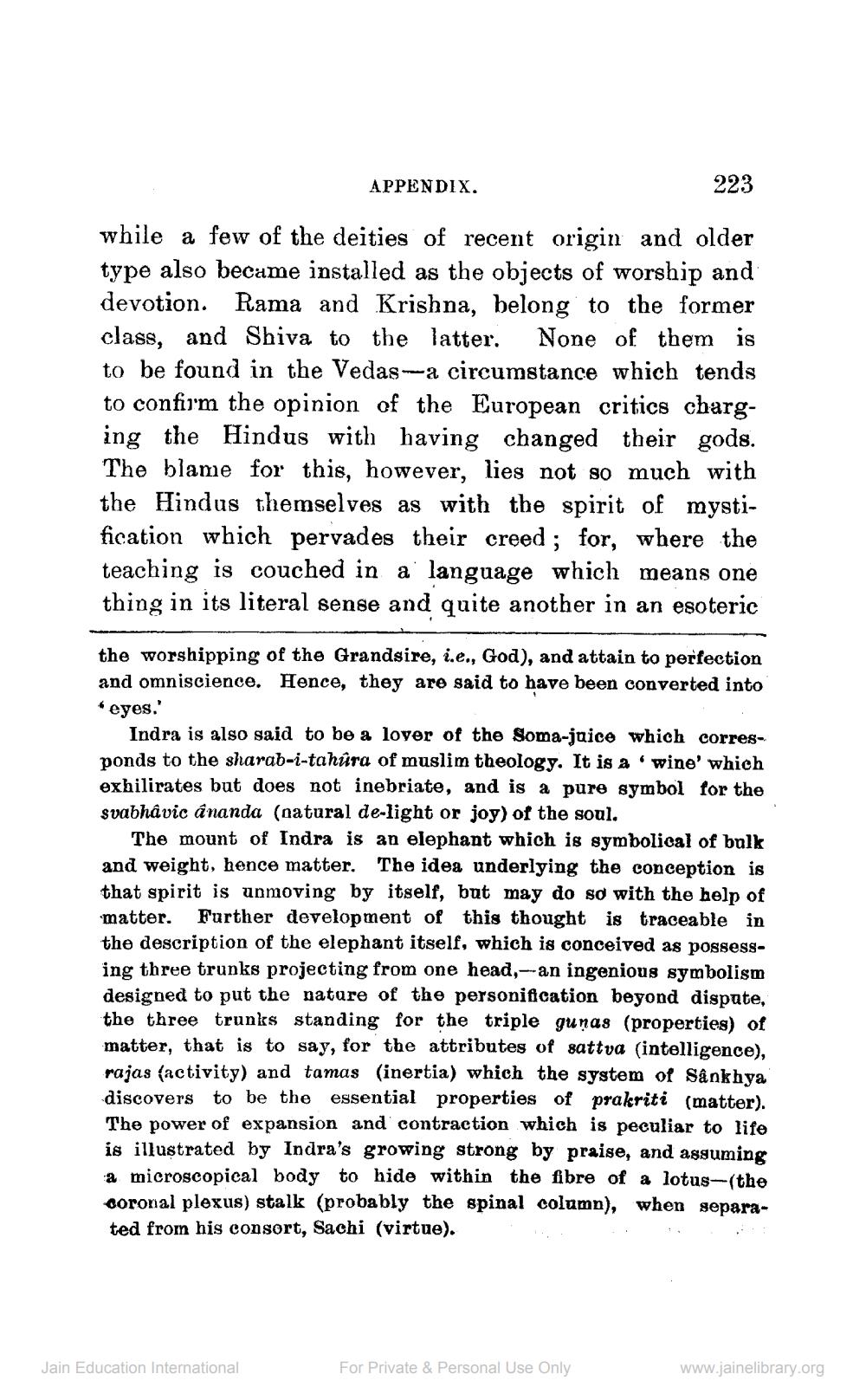________________
223
while a few of the deities of recent origin and older type also became installed as the objects of worship and devotion. Rama and Krishna, belong to the former class, and Shiva to the latter. None of them is to be found in the Vedas-a circumstance which tends to confirm the opinion of the European critics charging the Hindus with having changed their gods. The blame for this, however, lies not so much with the Hindus themselves as with the spirit of mystification which pervades their creed; for, where the teaching is couched in a language which means one thing in its literal sense and quite another in an esoteric
APPENDIX.
the worshipping of the Grandsire, i.e., God), and attain to perfection and omniscience. Hence, they are said to have been converted into 'eyes.'
Indra is also said to be a lover of the Soma-juice which corresponds to the sharab-i-tahúra of muslim theology. It is a 'wine' which exhilirates but does not inebriate, and is a pure symbol for the svabhâvic ananda (natural de-light or joy) of the soul.
The mount of Indra is an elephant which is symbolical of bulk and weight, hence matter. The idea underlying the conception is that spirit is unmoving by itself, but may do so with the help of matter. Further development of this thought is traceable in the description of the elephant itself, which is conceived as possessing three trunks projecting from one head,-an ingenious symbolism designed to put the nature of the personification beyond dispute, the three trunks standing for the triple gunas (properties) of matter, that is to say, for the attributes of sattva (intelligence), rajas (activity) and tamas (inertia) which the system of Sankhya discovers to be the essential properties of prakriti (matter). The power of expansion and contraction which is peculiar to life is illustrated by Indra's growing strong by praise, and assuming a microscopical body to hide within the fibre of a lotus-(the coronal plexus) stalk (probably the spinal column), when separated from his consort, Sachi (virtue).
Jain Education International
For Private & Personal Use Only
www.jainelibrary.org




